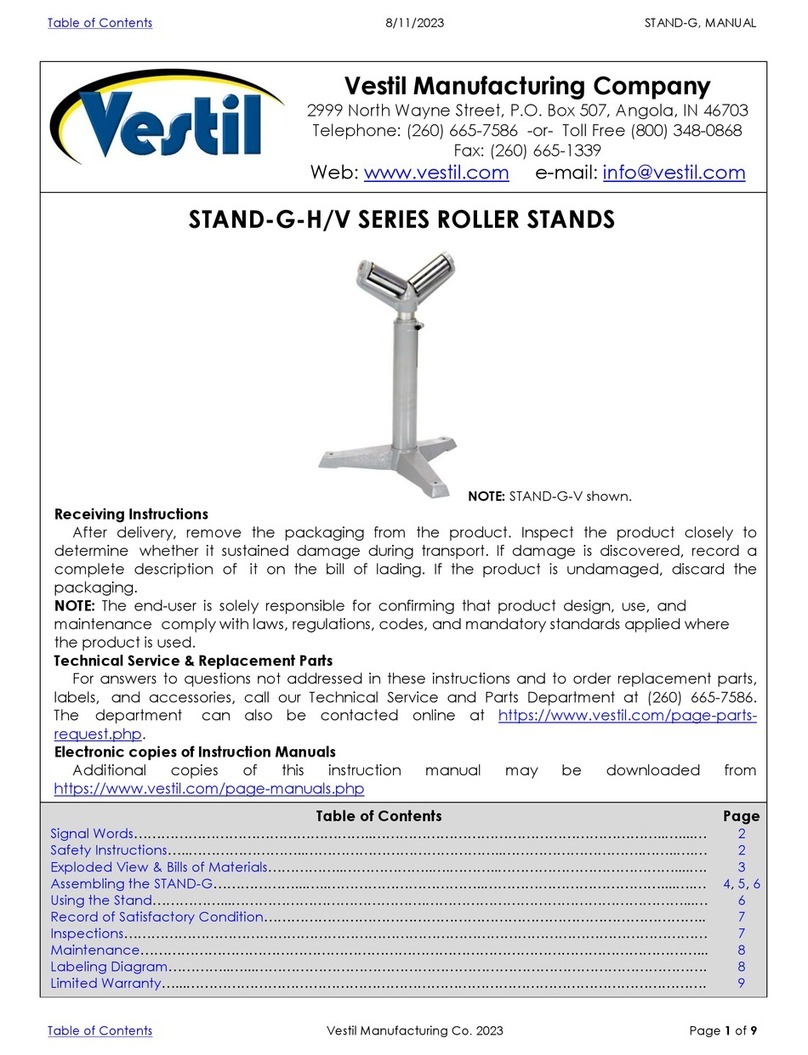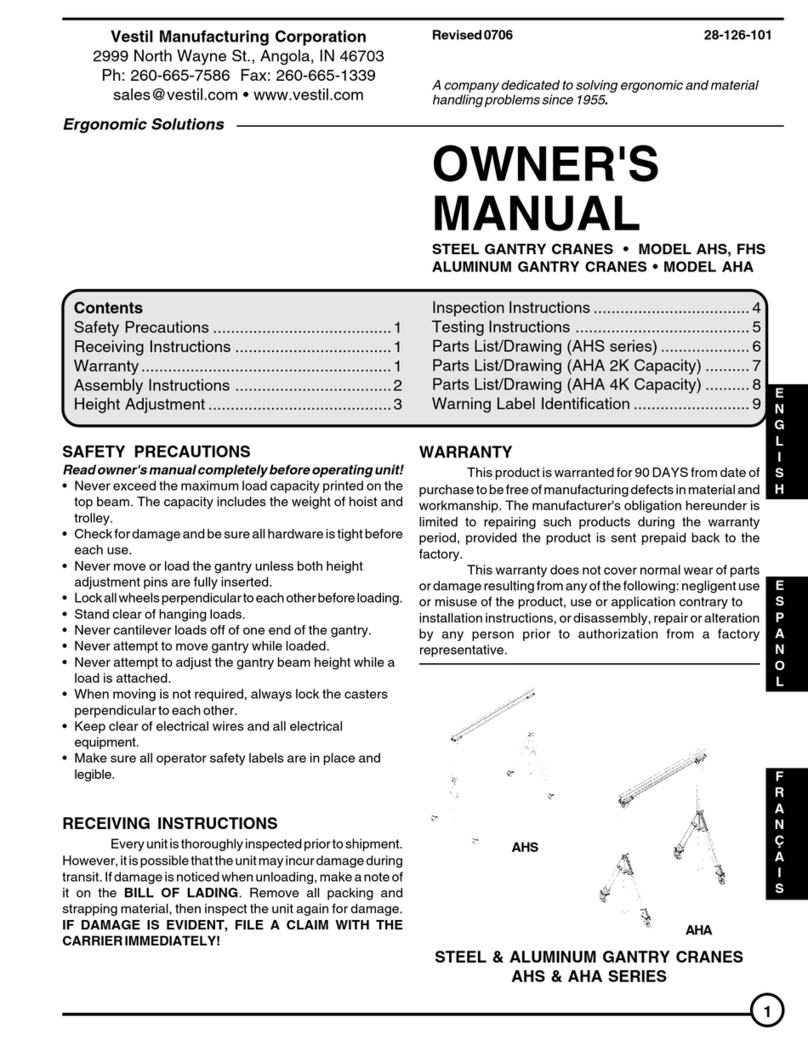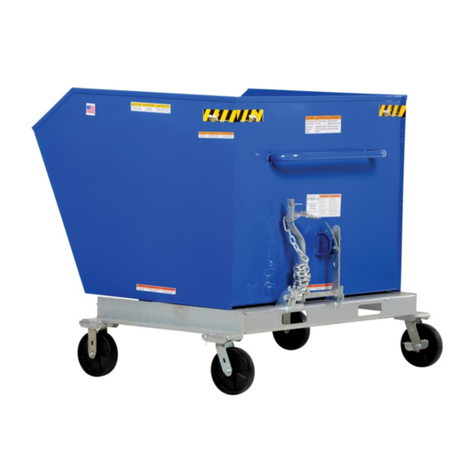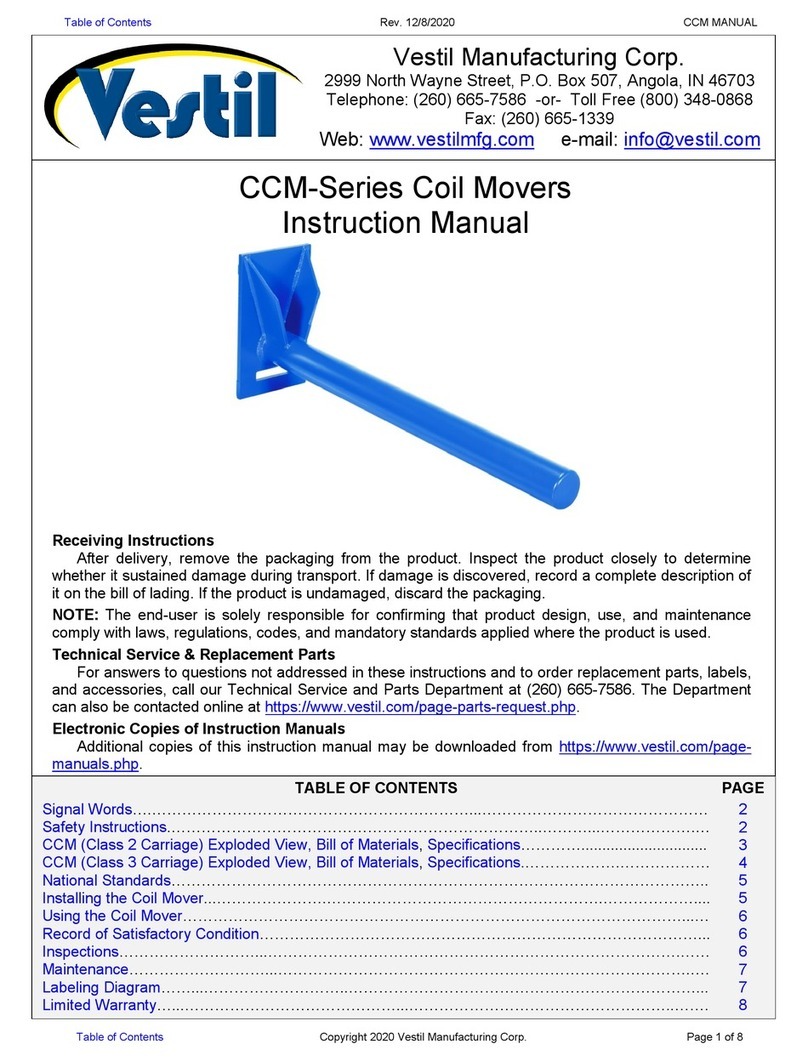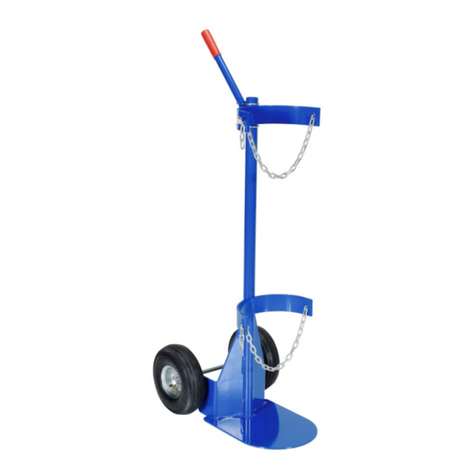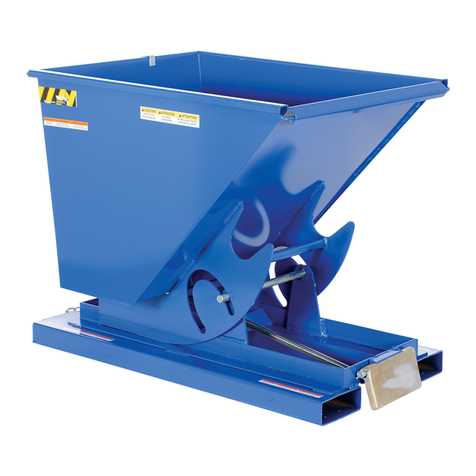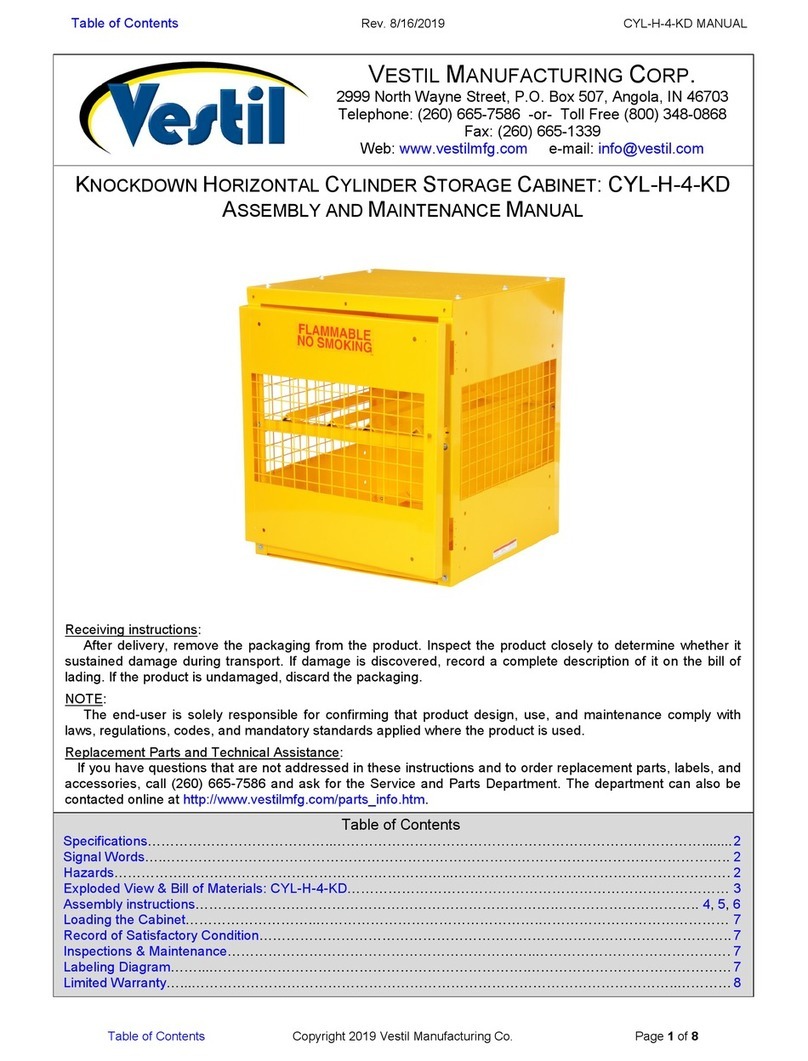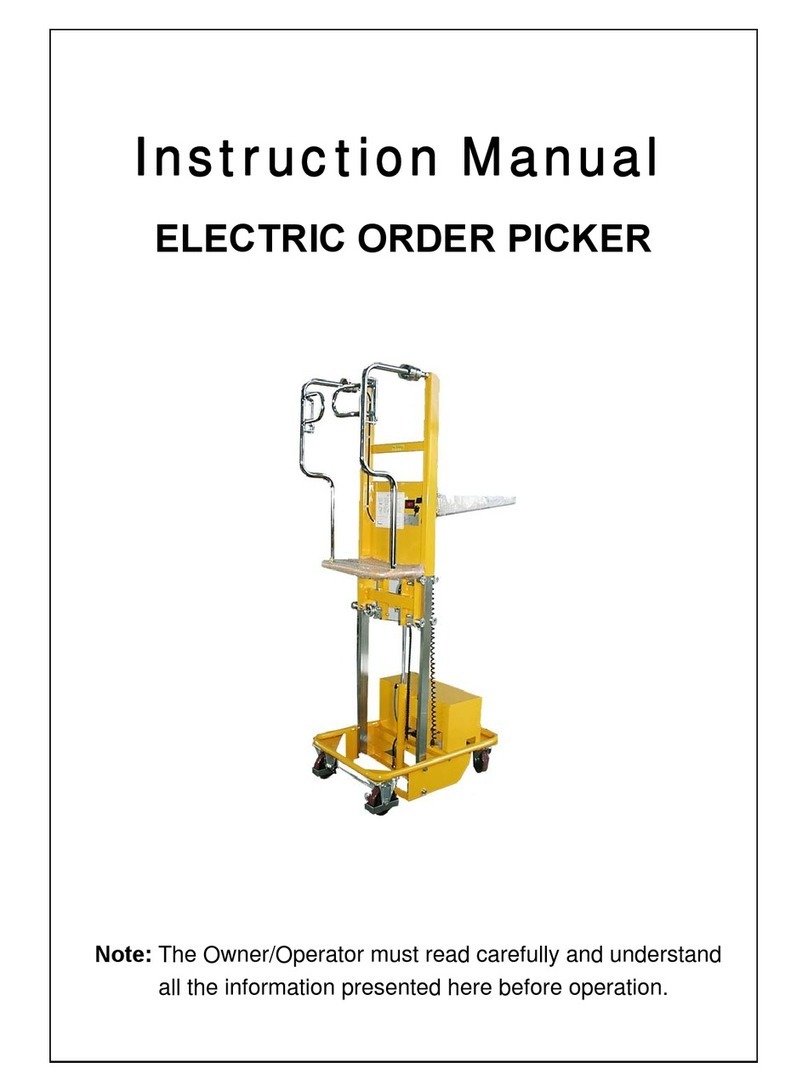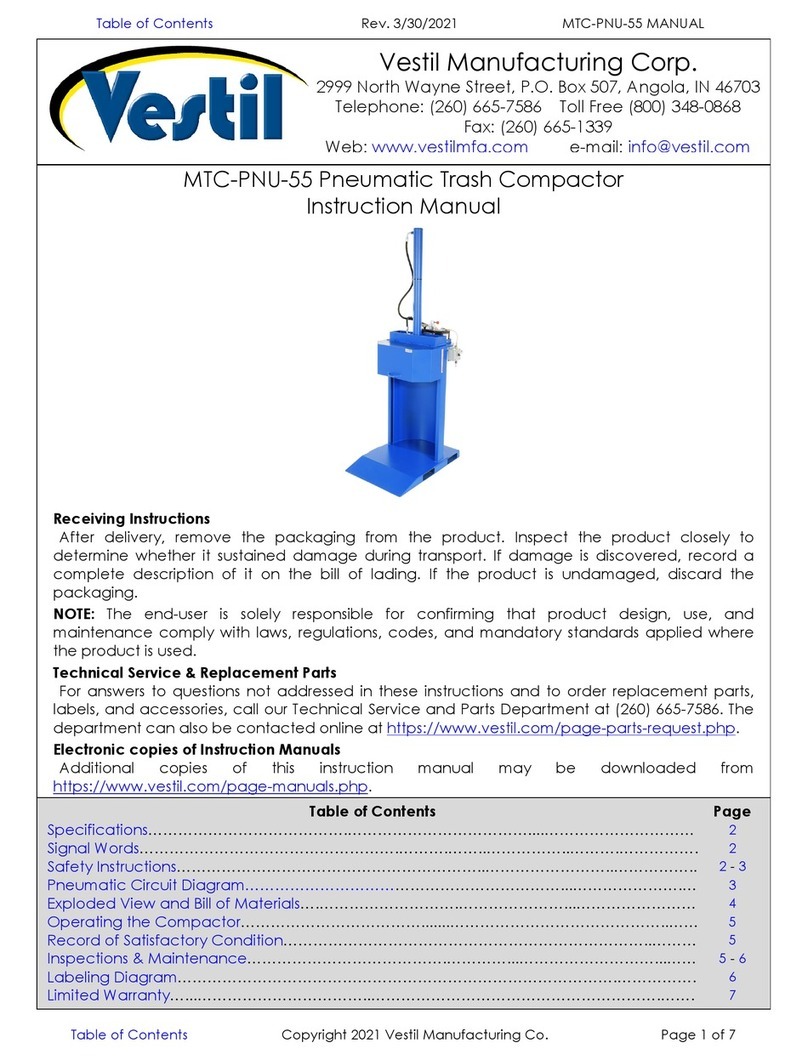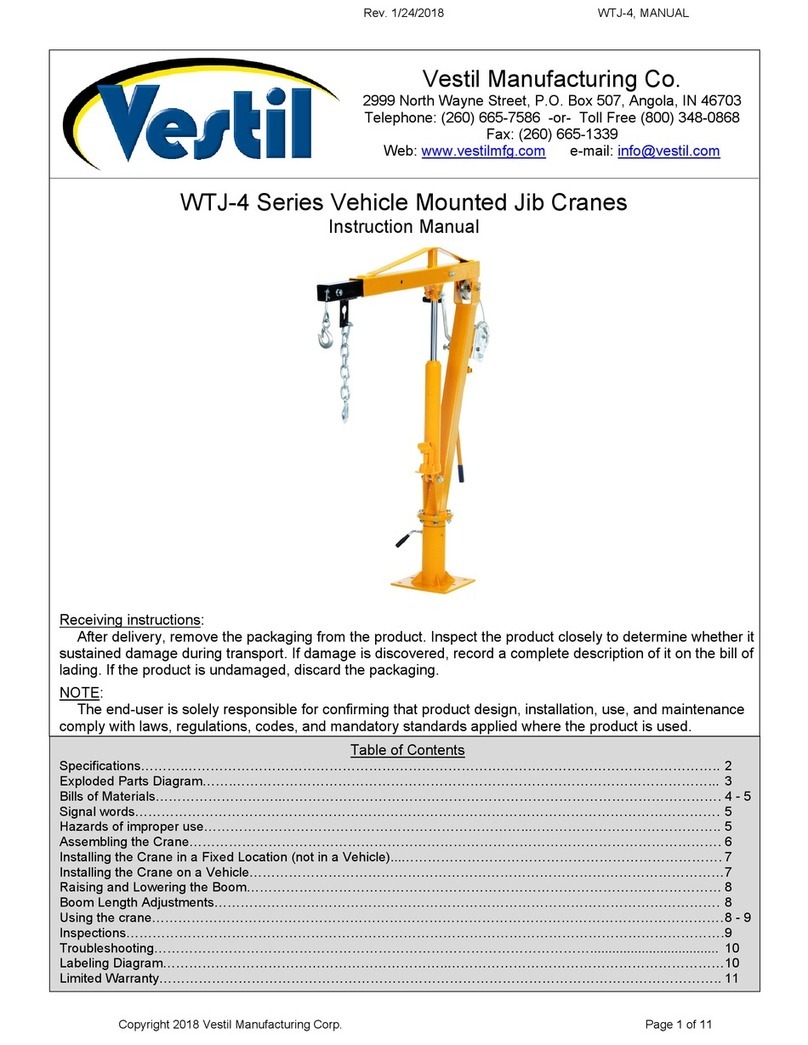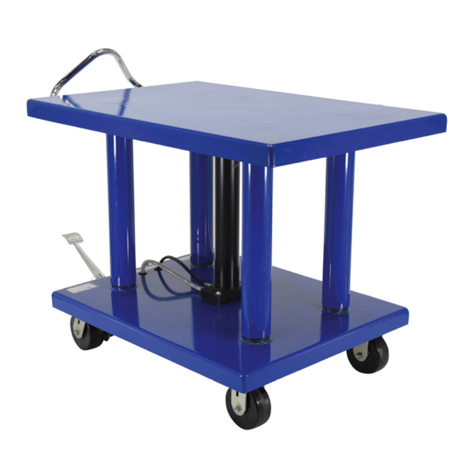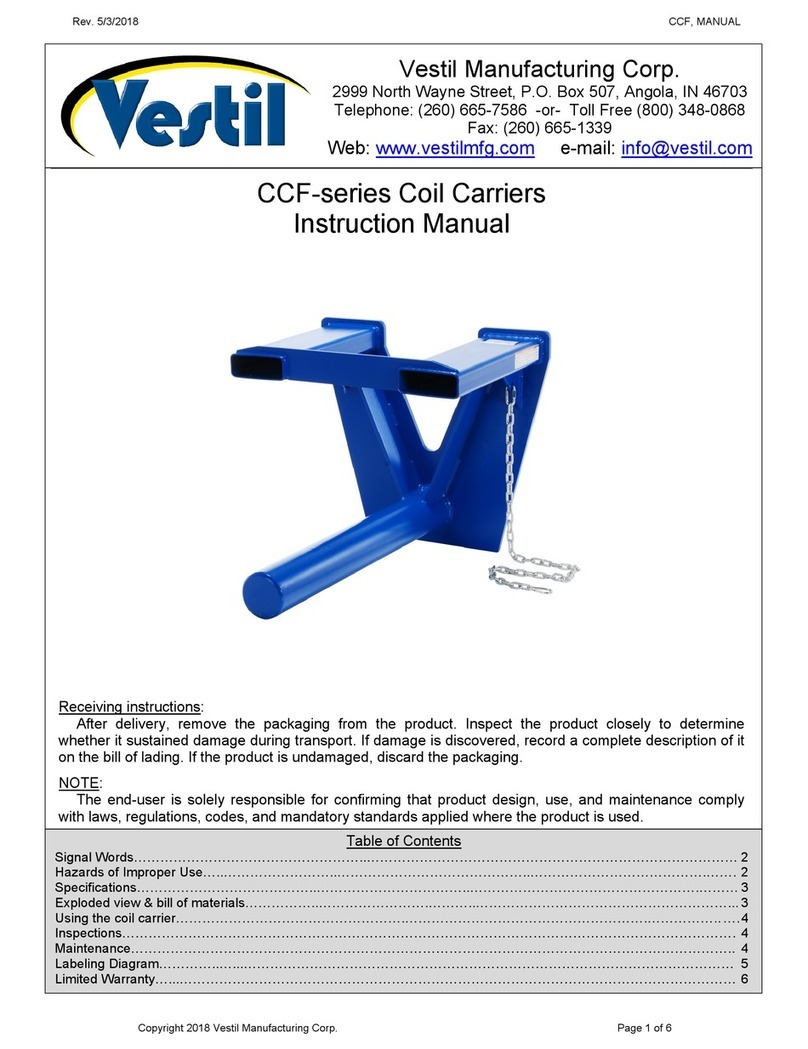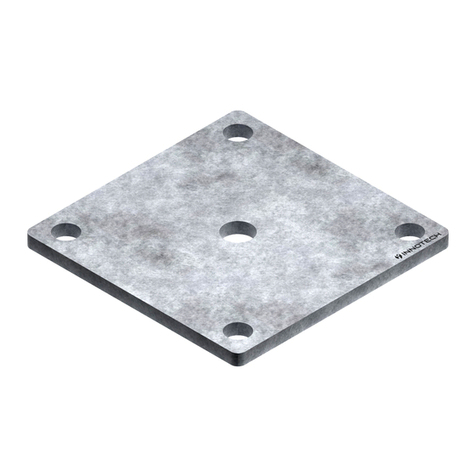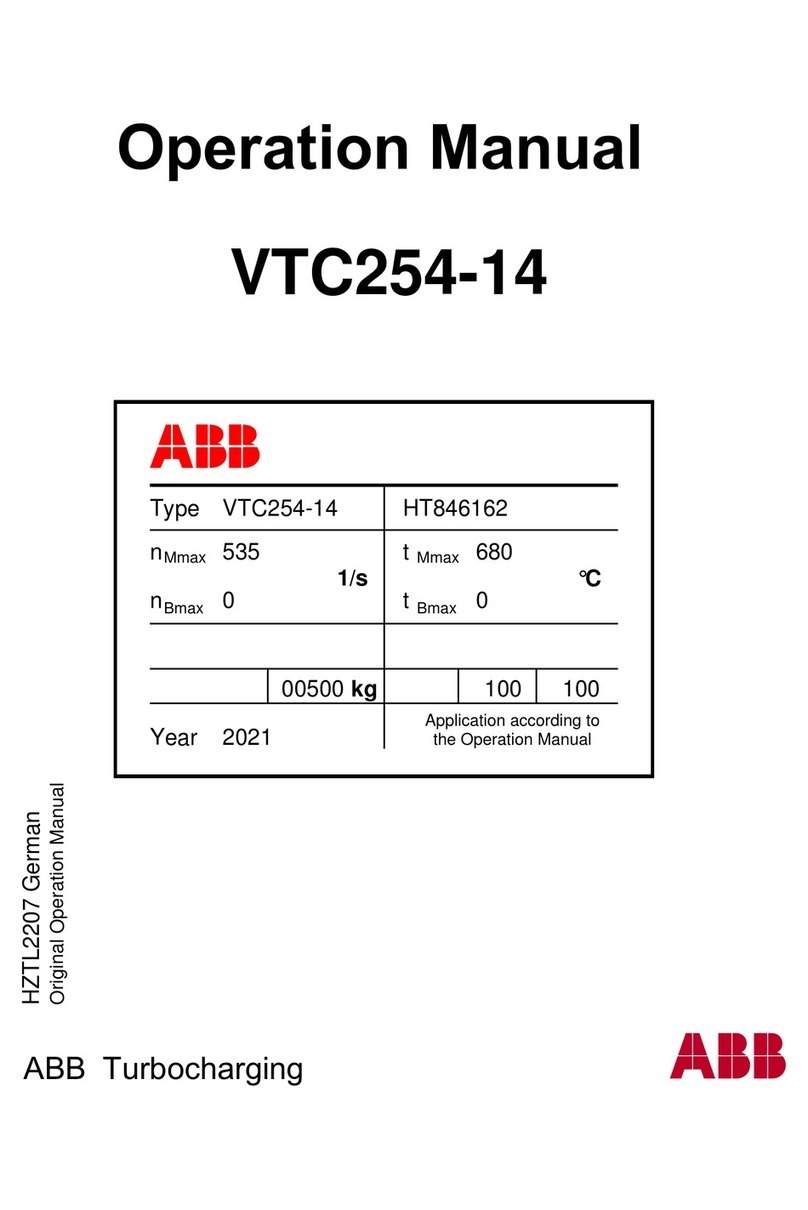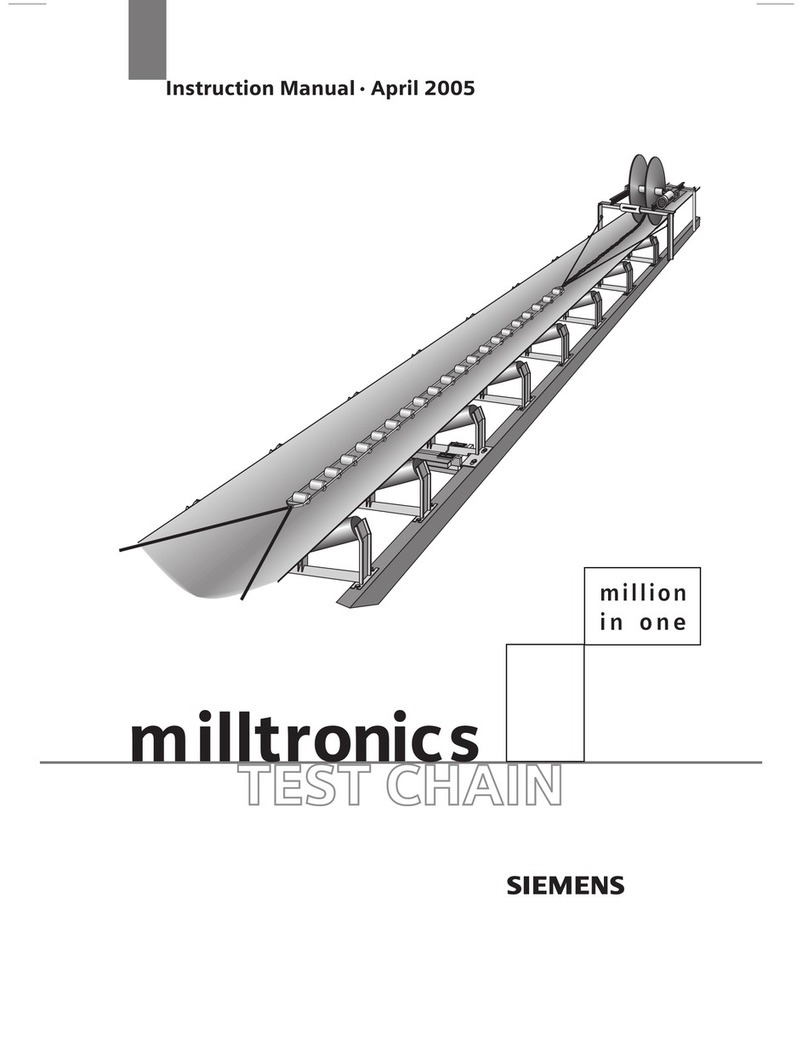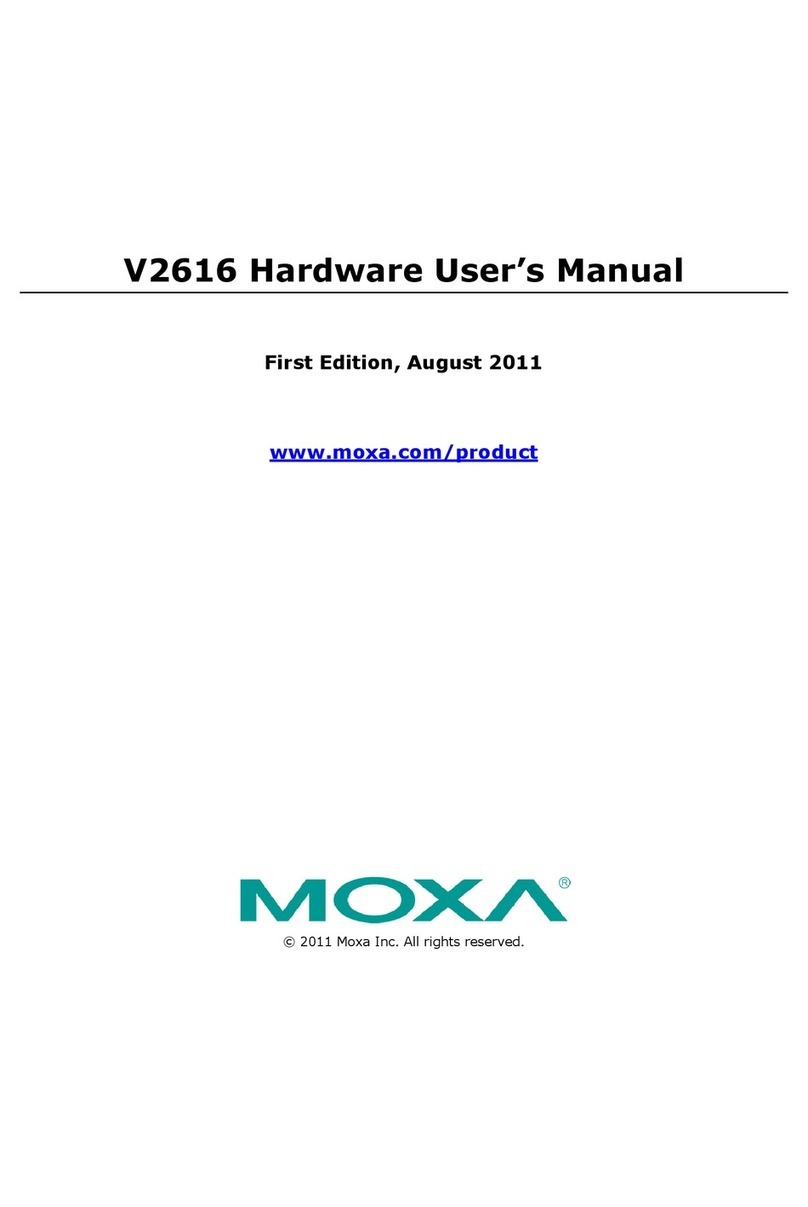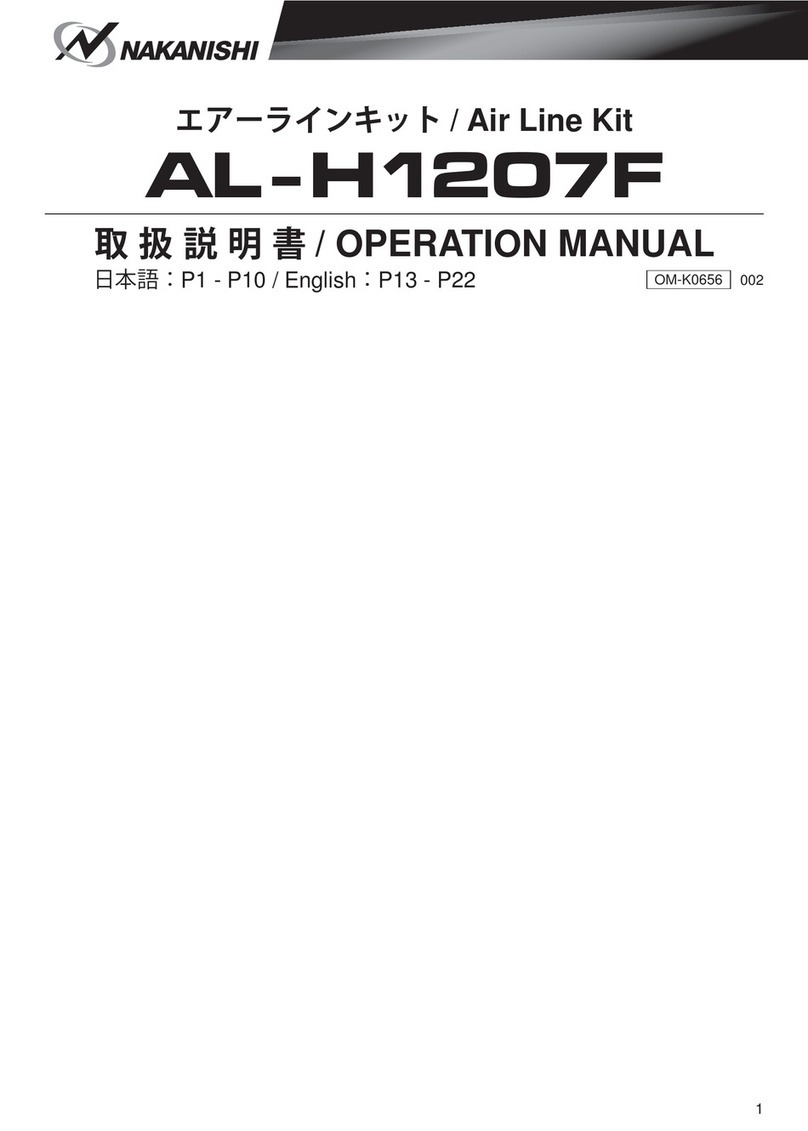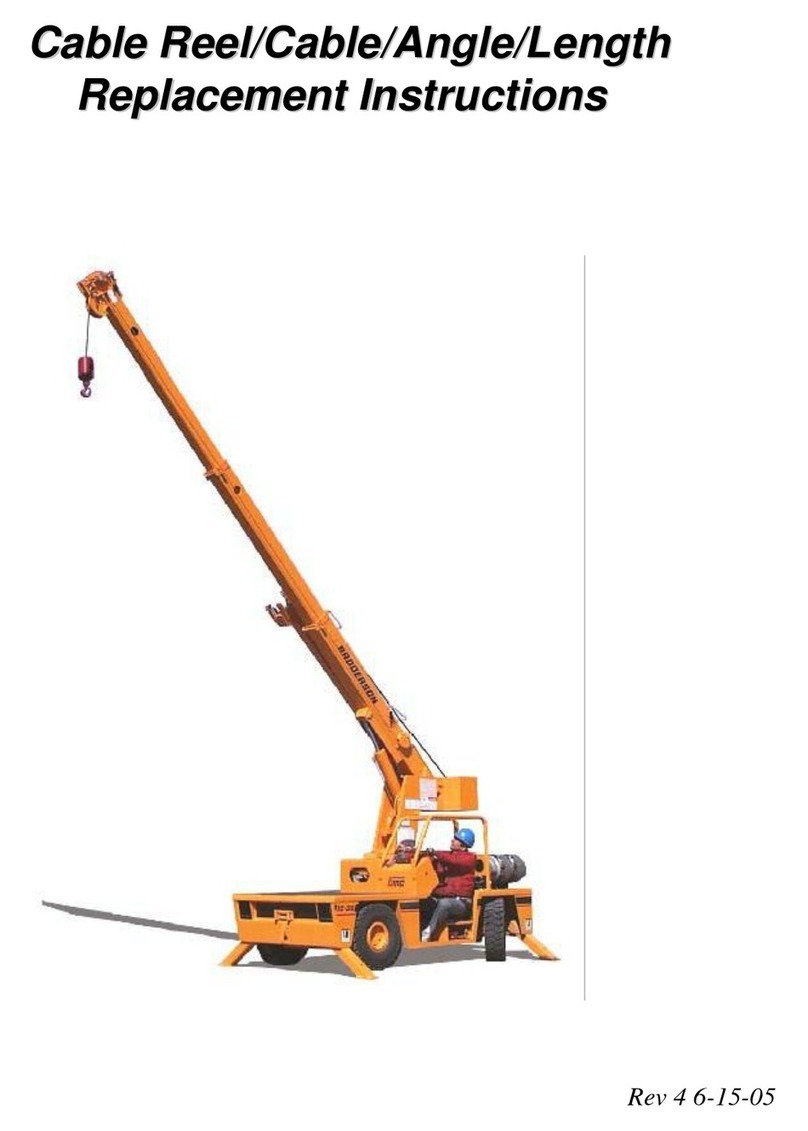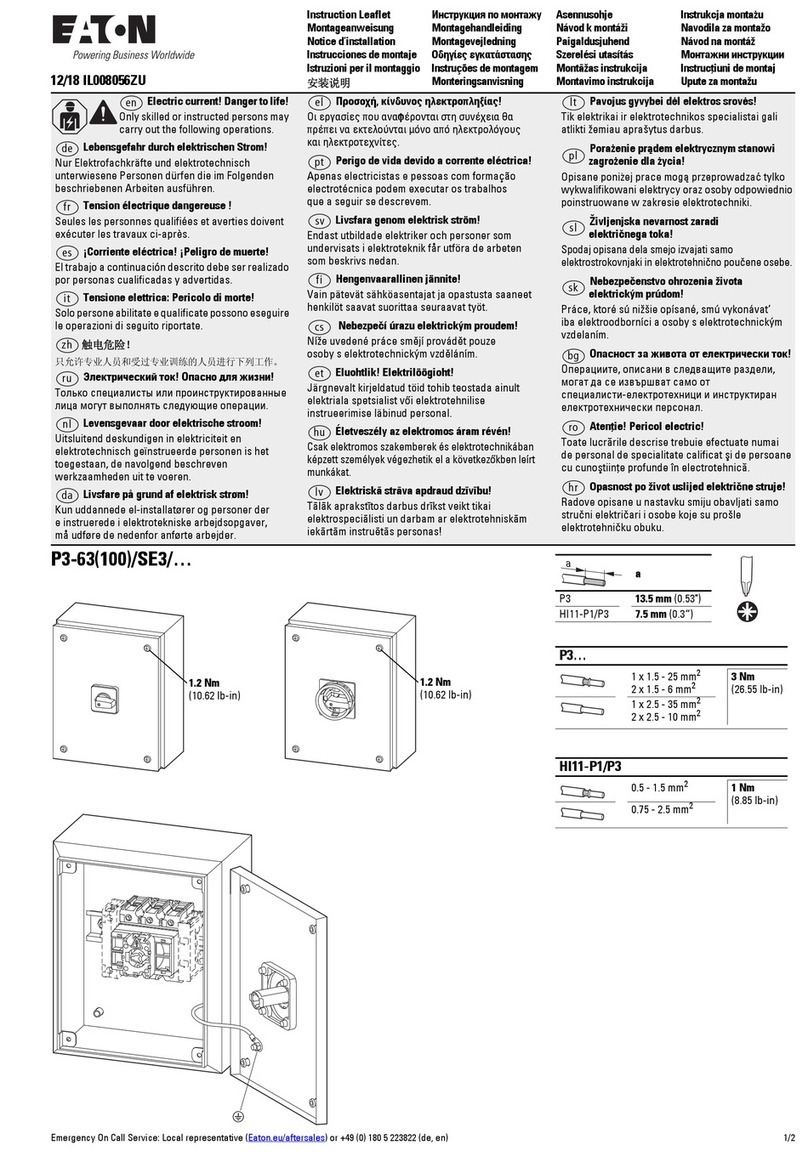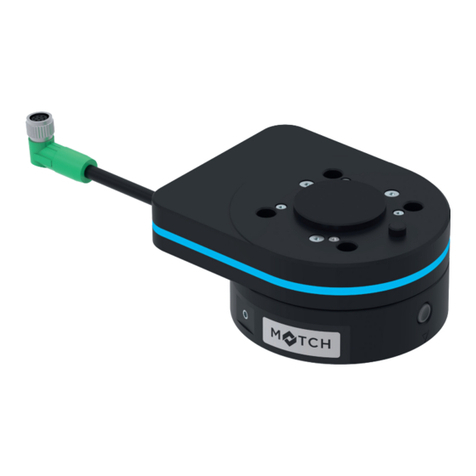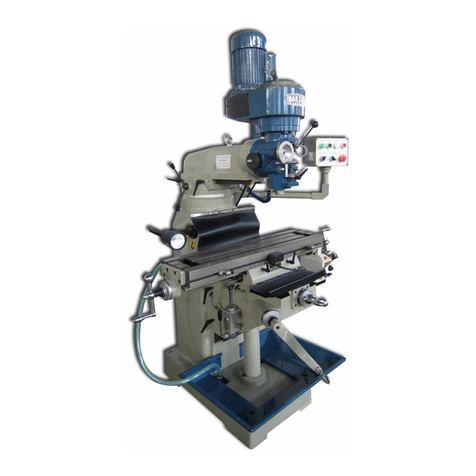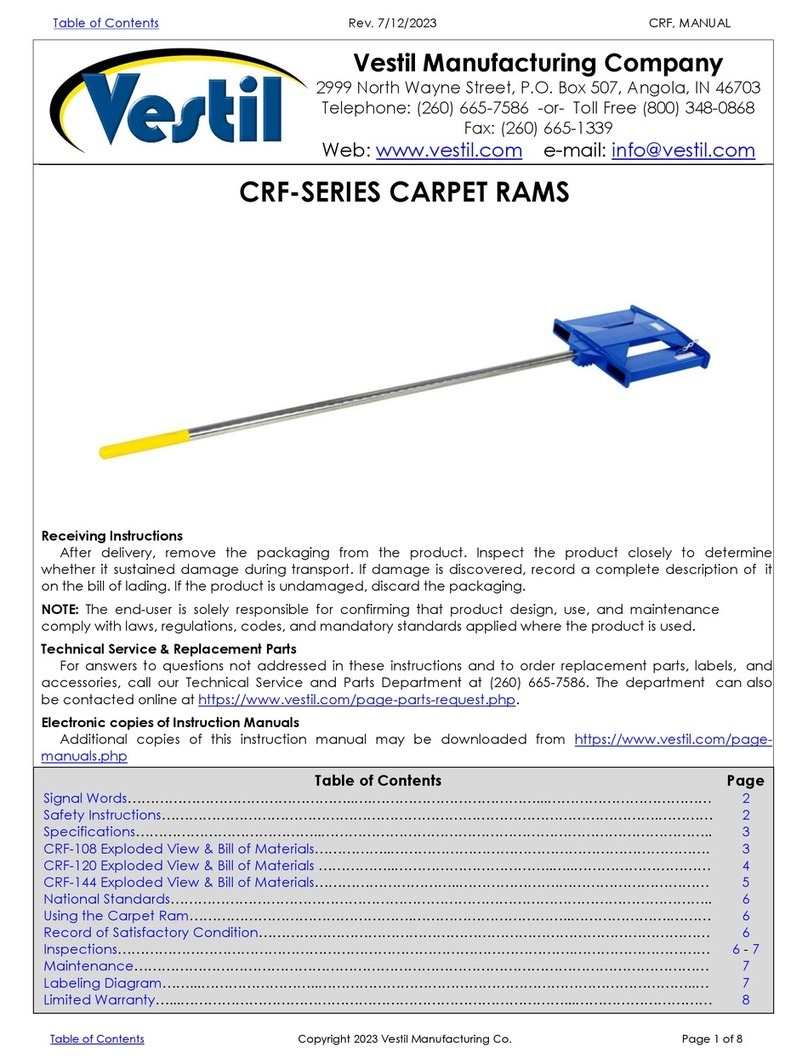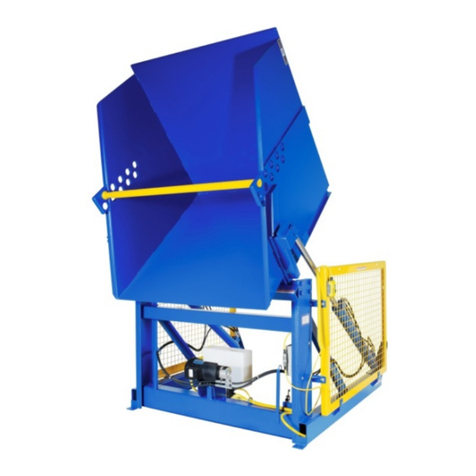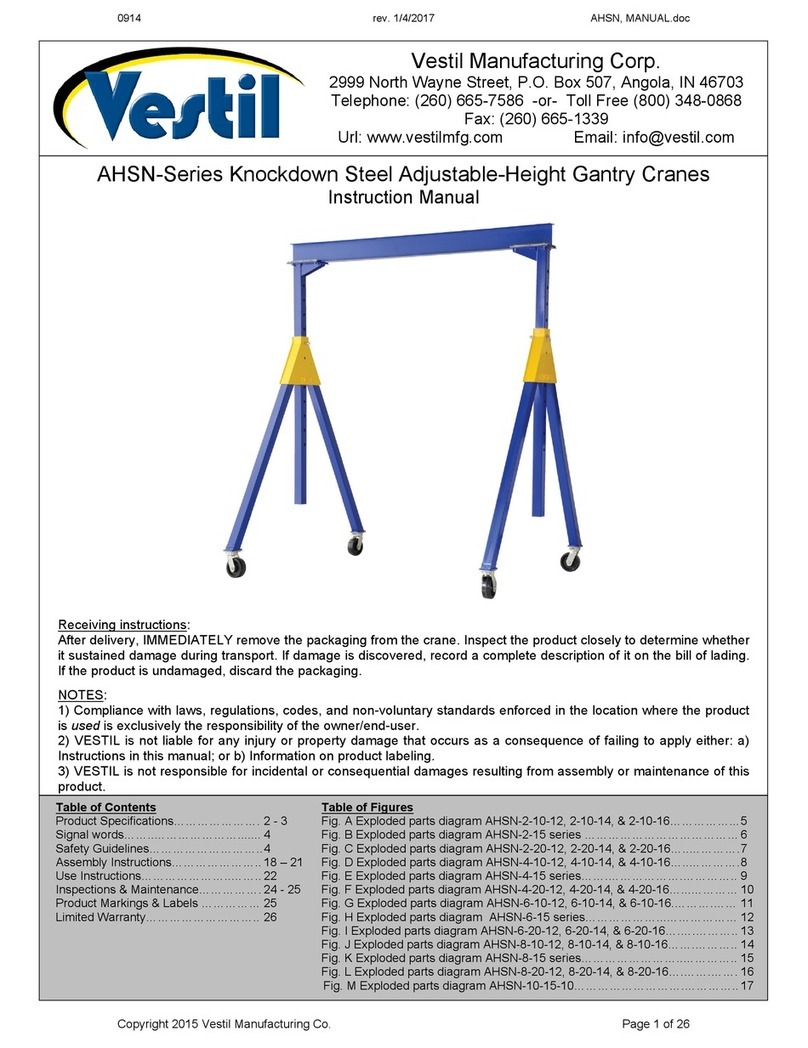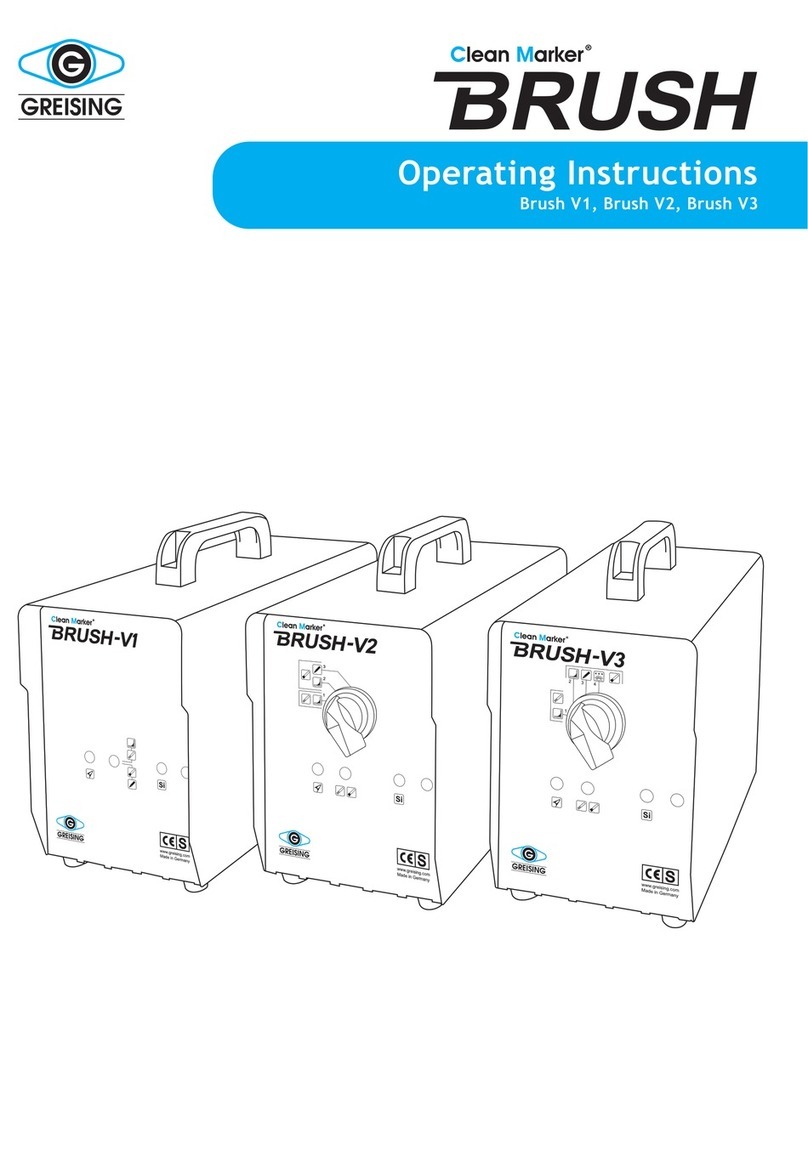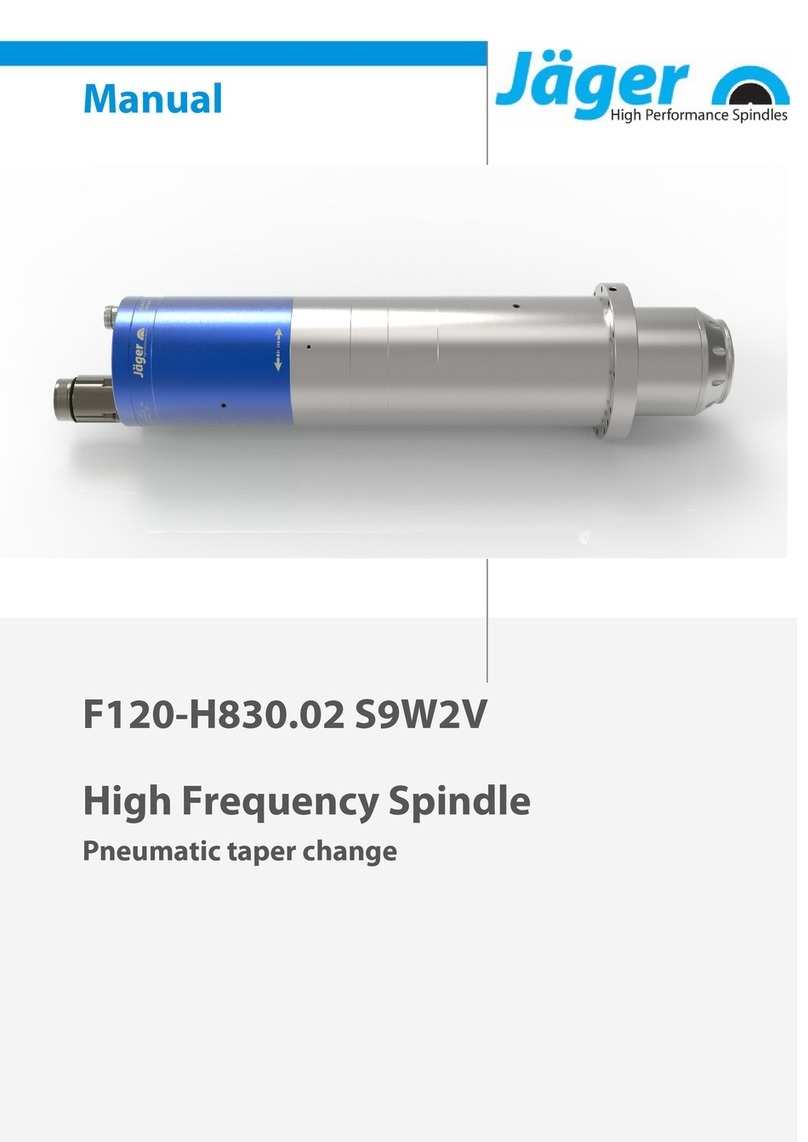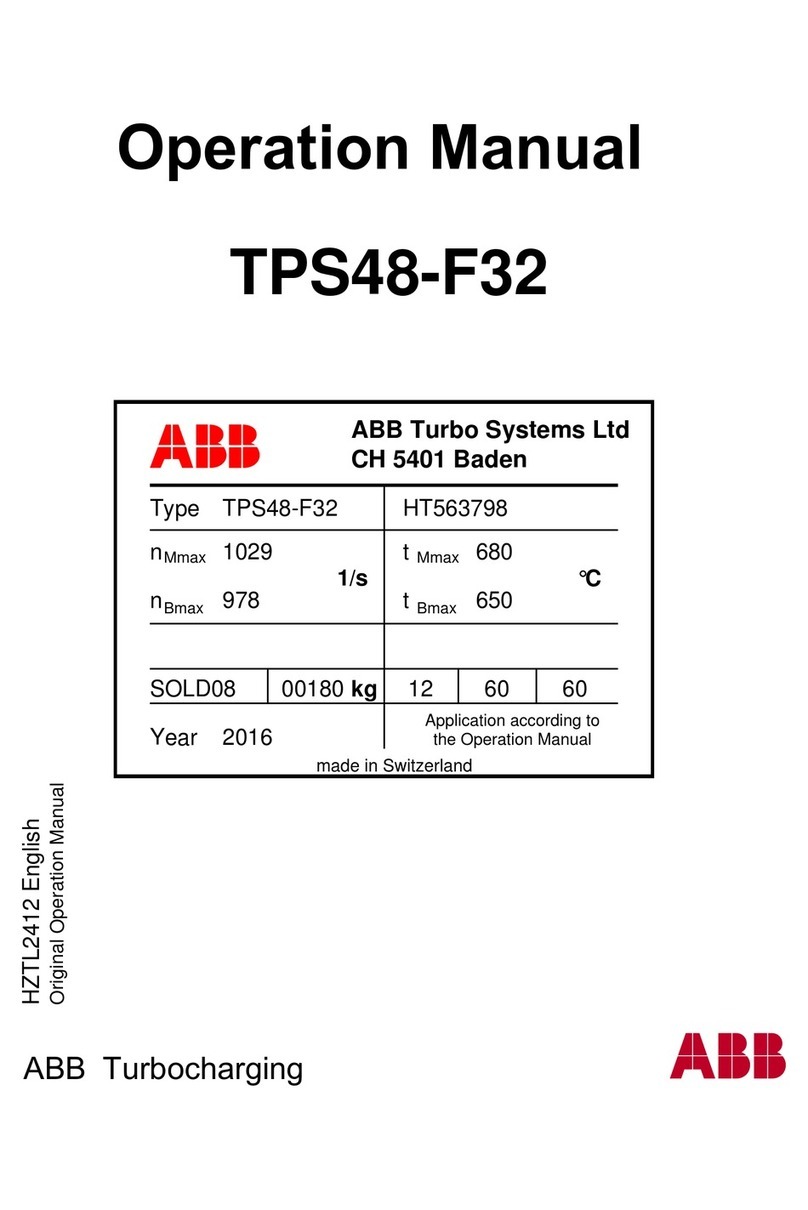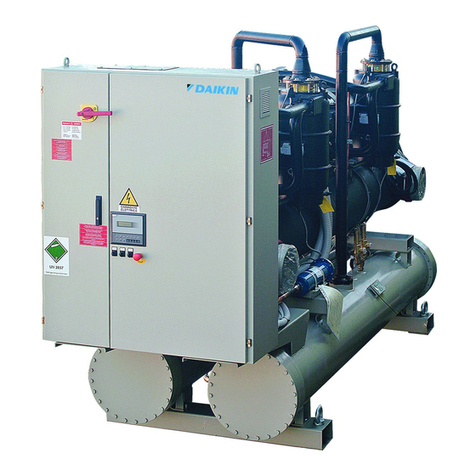
TABLE OF CONTENTS Rev. 9/3/2021 VST-4-Y, MANUAL
TABLE OF CONTENTS Copyright 2021 Vestil Manufacturing Corp. Page 2 of 7
SIGNAL WORDS
SIGNAL WORDS appear in this manual to draw the reader’s attention to important safety-related messages. The
following are signal words used in this manual and their definitions.
SAFETY INSTRUCTIONS
Vestil strives to identify foreseeable hazards associated with the use of its products, but no manual can
address every conceivable risk. Minimize the likelihood of injury by observing the hazards identified below and by
inspecting and maintaining the product as instructed in INSPECTIONS & MAINTNENANCE on p. 6.
•
WARNING
Risks of serious personal injuries or death.
•Read and understand the entire manual before assembling, using, inspecting, or servicing the ladder.
•DO NOT use this stepstool unless you are in good health. NEVER use the stool while under the
influence of alcohol or drugs, including prescription medication that affects balance, perception, or
judgment.
•DO NOT exceed the capacity/rated load. The total weight applied to the stepstool (weight of the user plus tools,
etc.) must not be greater than the capacity indicated on the riser of the top step (500 lb.; 227kg).
•Do not use the stepstool if it is cracked, dented, or damaged in other ways.
•Wear appropriate footwear. DO NOT wear high-heeled shoes or footwear with smooth soles.
•DO NOT use the stepstool on uneven, sloped, or unstable surfaces. ONLY use the ladder on even, level,
improved surfaces (e.g. concrete or asphalt).
•Make sure that you will not contact overhead objects with either your body or with the ladder during use.
•Avoid electrical shock! Take precautions to prevent contact, or possible contact, with an energized, insulated
conductor (electrical line).
•Remove foreign matter, e.g. mud, from your shoes before walking on the stool. Only wear slip-resistant shoes.
•Only stand on the steps. DO NOT climb on the railing. DO NOT slide on the railing.
•DO NOT access, or egress from, any step from another elevated surface.
•ALWAYS face the stairs and use the handrails while ascending and descending the stepstool.
•DO NOT increase the height of a step by standing on other objects placed on the stepstool.
•Inspect the stool as described in INSPECTIONS & MAINTENANCE on p. 6. DO NOT use the stool unless it is
in SATISFACTORY CONDITION. ONLY use manufacturer-approved replacement parts when repairs are
necessary.
•DO NOT use the stepstool if 1 or more of the molded feet (14-145-179) is worn, damaged or missing. See
EXPLODED VIEW on p. 4. Feet should prevent the stool from sliding. Replace worn or damaged feet before
using the stool.
•ONLY use the stepstool to access elevated working positions. DO NOT use it for any other purpose. DO NOT
store materials and/or equipment on the steps. Always unload the stool before leaving it unattended.
•DO NOT use the stool in front of a door unless that door is secured in an open position, is locked, is attended,
or is barricaded.
•DO NOT lean, or reach, over the handrails/sides of the stepstool. Position the stepstool as close to the work as
possible. Reposition the stool to prevent overreaching. Overreaching could cause instability and result in a fall.
•Avoid sudden shifts while on the stepstool.
•DO NOT push, pull, or lean on the handrails.
•DO NOT skip steps. Climb the stool one step at a time.
•DO NOT attempt to move the stepstool while someone is using it.
•DO NOT use the stool to transport people or objects. DO NOT ride on the stool while it is moved.
•DO NOT remove or obscure any label or information molded into the steps. Each label and all molded
information must be in place, readable, & undamaged. See LABELING DIAGRAM on p. 6.
•DO NOT modify this stepstool! Modifying the stool automatically voids the LIMITED WARRANTY (p. 7)and
might make the stool unsafe to use.
Identifies a hazardous situation which, if not avoided, WILL result in DEATH or
SERIOUS INJURY. Use of this signal word is limited to the most extreme situations.
Identifies a hazardous situation which, if not avoided, COULD result in DEATH or
SERIOUS INJURY.
Indicates a hazardous situation which, if not avoided, COULD result in MINOR or
MODERATE injury.
Identifies practices likely to result in product/property damage, such as operation
that might damage the product.







